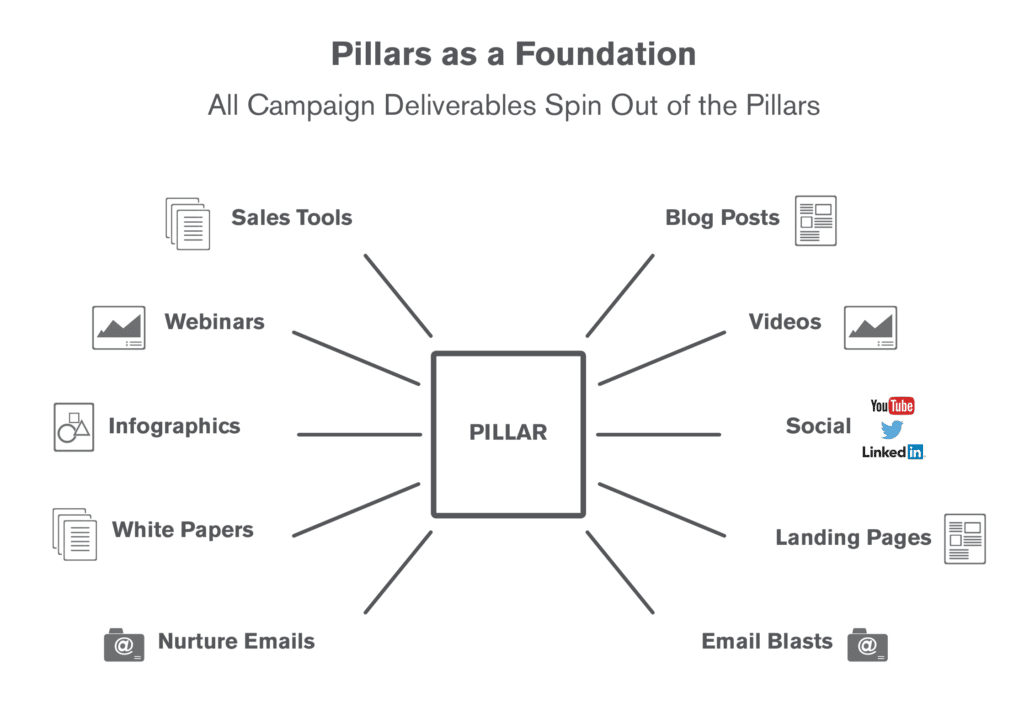Often, we hear the terms content and SEO in different contexts. We think of content as the deliverables of a campaign — blog posts, videos, white papers, email blasts, infographics and the like. When we think of SEO, we gravitate toward the mechanics of generating traffic and driving visitors to a website.
But content and SEO are anything but mutually exclusive. In fact, they are inextricably connected and should be viewed that way when producing content. Rightly so, the term SEO content has emerged to reflect the merging of the two seemingly disparate disciplines.
Pillars are Key for SEO Content
Developing content for content sake and posting it to your website isn’t time or money well spent. When we approach SEO content writing and development for our clients, we begin by identifying pillars (topics) that resonate with their customers, prospective buyers and influencers. These pillar concepts are derived from talking with a company’s leaders about what they want to achieve and how they plan to grow strategically. We also conduct research to learn about the specific pain points in the industry — talking to the company’s internal subject matter experts and friendly customers or possibly paid interviews with prospects who are not current customers. Through the pillar development process, a company is much more likely to develop meaningful content that speaks to their audience’s key concerns and challenges.

Identifying SEO Keywords
In tandem with pillar development, we think about SEO keyword opportunities to pursue and use search tools like Moz to identify and vet the best keywords for a pillar topic. We find that the way a company talks about their industry, products or services isn’t always the way their audience searches — making keyword research essential. This is especially true for B2B brands in niche industries with niche products or services. In these cases, we often find that keyword phrases that precisely describe what the brand offers have no or little monthly search volume. In some cases, that might be the route to pursue — especially if one of the underlying strategies for content development is to educate the marketplace about a new offering or industry category. As more content is produced and awareness grows, search volume will likely increase and the company will be in a good position to rank well in SERP.
Using search tools like Moz, we discover precisely how a company’s audience is searching and identify the right keywords or long-tail phrases to integrate into content so it can be found by their audience in online searches. However, too often, SEO is seen as a last step of adding metadata tags to a piece of content that’s fully developed and ready to be posted online. SEO should be part of content development at the beginning — uncovering and incorporating the right keywords into titles, subheads, captions and body copy. SEO as a mere afterthought for content keeps SEO and content siloed and less effective.
Activating SEO Content
After we have created a piece of SEO , the next step is activating it through social media, PR and paid vehicles such as Google pay-per-click (PPC) or LinkedIn ads. Posting content online and then simply expecting it to be found by your audience through organic search leaves much opportunity on the table. Activating content through social, traditional public relations and paid channels — and driving those who engage with your content to landing pages on your website — is a powerful way to elevate your content and increase engagement.
